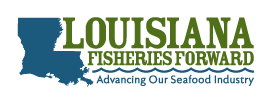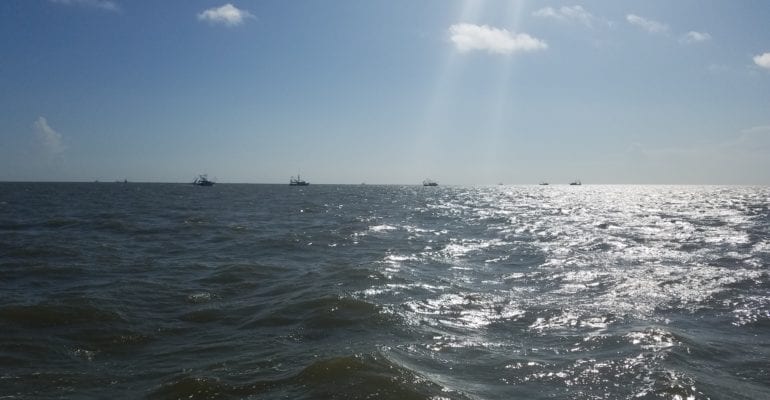The Gulf of Mexico Fishery Management Council met virtually from January 24-27, 2022. The Council began by electing Dr. Greg Stunz as Vice Chair. The Council also revised and adopted Committee assignments through August 2022. The following is a brief overview of what was accomplished during the meeting:
Vermilion Snapper
After hearing a summary of public comments and recommendations from its Reef Fish Advisory Panel, the Council took final action on a Framework Action to increase the vermilion snapper overfishing limit, acceptable biological catch, and annual catch limit. The most recent stock assessment (SEDAR 67 2020) determined that the stock is not overfished nor experiencing overfishing. Vermilion snapper is managed as a single stock without sector allocations. The assessment incorporated new recreational catch and effort estimations from the Marine Recreational Information Program’s Fishing Effort Survey (MRIP-FES) and determined that the stock is healthy so, the Council increased vermilion snapper catch limits in pounds whole weight as follows:
Overfishing Limit: 8,600,000
Acceptable Biological Catch: 7,270,000
Annual Catch Limit: 5,450,000
This Framework Action to Modify Vermilion Snapper Overfishing Limit, Acceptable Biological Catch, and Annual Catch Limit will be transmitted to the Secretary of Commerce for approval and implementation as soon as practicable.
King Mackerel
The Council reviewed a draft of Amendment 33: Modifications to the Gulf of Mexico Migratory Group King Mackerel Catch Limits and Sector Allocations. Amendment 33 is being developed by the Gulf Council and, because coastal migratory pelagic species are managed jointly, the South Atlantic Council shares responsibility for making management decisions. A recent update stock assessment for king mackerel (SEDAR 38 Update 2020) determined that king mackerel is not overfished or experiencing overfishing. However, the spawning stock biomass was found to be below the biomass necessary to achieve maximum sustainable yield. The Council decided to address modifications to king mackerel catch limits in a stand-alone framework action to allow such modifications to be addressed more quickly. Additionally, the Council chose to narrow the range of options being considered for reallocation to the commercial sector in Amendment 33.
The South Atlantic Council is expected to review these modifications during its March 2022 meeting. Then, in April 2022, the Gulf Council is expected to review a framework action that addresses catch limit modifications and continue work on a public hearing draft of Amendment 33.
The Council also reviewed a draft of Amendment 34: Atlantic Migratory Group King Mackerel Catch Levels and Atlantic King and Spanish Mackerel Management Measures. Amendment 34 is being developed by the South Atlantic Council and, because coastal migratory pelagic species are managed jointly, the Gulf Council shares responsibility for making management decisions. Consistent with the South Atlantic Council, the Gulf Council selected to remove alternatives that would reduce the recreational and commercial minimum size limit for Atlantic king mackerel. The Gulf Council also selected a preferred alternative that aligns with the South Atlantic Council’s preferred, to allow for the retention of cut-off/damaged Atlantic migratory group king mackerel caught under the recreational bag limit that comply with minimum size limits. The South Atlantic Council is expected to take final action on the document during its March 2022 meeting. Then, the Gulf Council is expected to take final action in April 2022.
Greater Amberjack
The Council was presented with revised projections from the most recent greater amberjack stock assessment (SEDAR 70 2020). The assessment shows that greater amberjack is both overfished and experiencing overfishing, and that recent average recruitment is lower than it’s ever been. The revised sector allocation-specific projections aim to rebuild the greater amberjack stock by 2027. Based on the results of the stock assessment and revised projections, the Council’s Scientific and Statistical Committee recommended new overfishing limit and acceptable biological catch recommendations for greater amberjack. These recommendations require a significant decrease in harvest and the Council is obligated to adjust the greater amberjack annual catch limit so it does not exceed the newly recommended acceptable biological catch. The Council will use this new information and catch limit recommendations as it develops a modification to the current greater amberjack rebuilding plan.
Gag Grouper
The Council was presented with the results of the most recent gag grouper stock assessment (SEDAR 72 2021). The assessment, which included new recreational catch and effort data and an ecosystem-based red tide analysis, determined that the stock is overfished and experiencing overfishing. Additionally, the assessment identified that there is a low proportion of males in the gag grouper population (less than 2%), which impacts the stock’s ability to reproduce. The Council is obligated to end overfishing and develop a rebuilding plan for gag grouper, and initiated the development of a plan amendment to revise catch limits, accountability measures, and other management measures. Additionally, since the last year of data incorporated into the stock assessment was 2019, the Council requested that the Southeast Fisheries Science Center evaluate the feasibility of an interim analysis on gag grouper using the most recent data possible to update catch advice. The Council has also requested a full alternative run of SEDAR 72 using the State of Florida’s State Reef Fish Survey to inform private recreational landings of gag grouper, which is expected to be completed in the fall of 2022.
Commercial Individual Fishing Quota (IFQ) Programs
The Council began consideration of applicants for the new IFQ Focus Group, whose charge will include reviewing the current goals and objectives of the IFQ Programs and to recommend their replacement or retention. Due to time constraints and the complexity of meeting virtually, the Council decided to meet again in a separate, special session to finalize the IFQ Focus Group appointments.
Yellowtail Snapper
The Council discussed the status of Snapper Grouper Amendment 44 / Reef Fish Amendment 55, which is jointly managed by both the Gulf of Mexico and South Atlantic Fishery Management Councils. The most recent yellowtail stock assessment (SEDAR 64), completed in 2020, used data through 2017 and incorporated new recreational catch and effort data from the Marine Recreational Information Program’s Fishing Effort Survey (MRIP-FES). Both Councils’ Scientific and Statistical Committees routinely recommend against using projections beyond 5 years from the assessment’s terminal year (2017). Based on the current timeline of the amendment, both Councils decided to suspend work until the Florida Fish and Wildlife Conservation Commission can conduct an update to the assessment to incorporate landings data through 2020.
For-Hire Electronic Reporting
The Council continued work on a Framework Action to ensure that for-hire trips are not delayed or canceled in the event of Vessel Monitoring System (VMS) equipment failures. Beginning on March 1, 2022, vessels with Charter/Headboat permits for reef fish and/or coastal migratory pelagic fish must be equipped with a satellite or cellular position reporting unit that operates 24-hours a day, collects location data at least once an hour, and automatically transmits data to NOAA Fisheries. The Council selected preferred alternatives that would allow permit holders to request exemptions to the VMS requirements to address equipment failures twice a year for 10 days at a time. The Council plans to take final action on this amendment during its April 2022 meeting.
Wenchman Snapper
The mid-water snapper complex, which includes silk, blackfin, wenchman, and queen snapper, closed to commercial and recreational fishing on September 18, 2021, when the annual catch limit was projected to be met. The Council heard public testimony from commercial fishermen suggesting that the mid-water snapper complex annual catch limit should be re-evaluated due to substantial recent commercial landings of wenchman, and that at current levels, the catch limit for this complex is limiting the harvest of other species. Little scientific information exists about wenchman; although, they are thought to be widely distributed and possibly abundant on rocky banks and outcroppings. Based on this information, the Council requested that the Southeast Fisheries Science Center compile available fishery-dependent and fishery-independent information on wenchman that could be evaluated by the Scientific and Statistical Committee .
Essential Fish Habitat
Essential Fish Habitat is defined as the waters and substrate necessary to fish for spawning, breeding, feeding or growth to maturity. The Council took another look at a draft Generic Amendment that considers updating the current descriptions and identifications of Essential Fish Habitat for Shrimp, Reef Fish, Coastal Migratory Pelagics, Spiny Lobster, and Red Drum Fishery Management Plans by using contemporary habitat and species presence data sources, along with advances in computational modeling techniques. The Council will continue to work on this document at a future meeting.
Shrimp
After hearing a presentation on the NOAA Fisheries review of draft type-approval specifications for reinstating the historical cellular electronic logbook program, the Council continued work on an updated Draft Framework Action that aims to transition the federally-permitted Gulf shrimp fleet to a new platform for vessel position data collection and transmission. The Council discussed potential avenues for data transmission, and considered how timing of VMS pilot testing on shrimp vessels and the development of Council-funded research to explore the P-Sea Windplot software program would impact development of the Draft Framework Action. The Council plans to continue work on this document at a future meeting.





